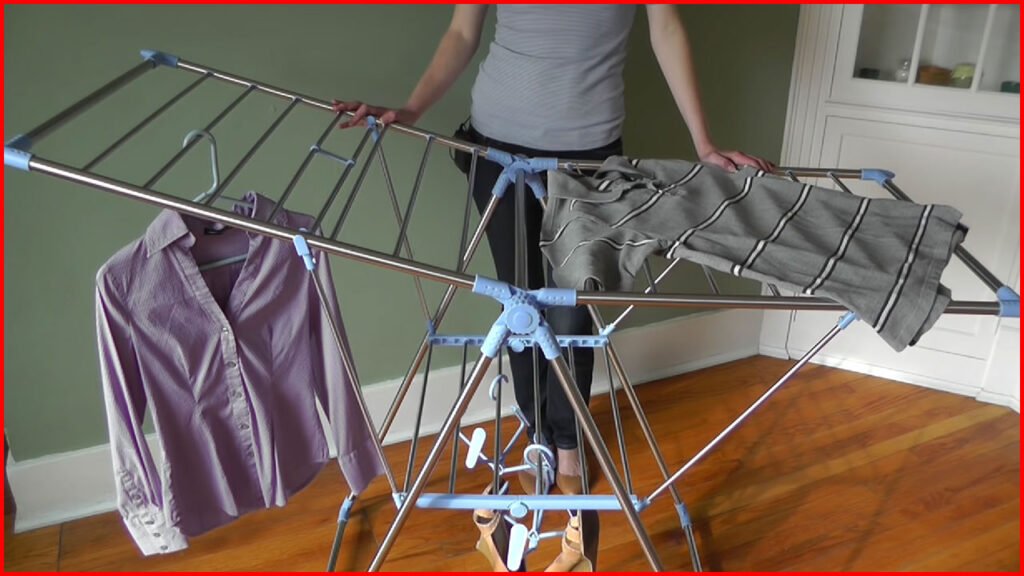To make your drying rack more energy-efficient, maximize natural air circulation and place it in a sunny area. By doing this, you can reduce the need for electric drying.
Making your drying rack more energy-efficient not only benefits the environment but also saves you money on your utility bills. With some simple adjustments and conscious efforts, you can ensure that your drying rack operates more sustainably.
We will explore practical tips and techniques to enhance the energy efficiency of your drying rack. Whether you are using an indoor drying rack or utilizing an outdoor clothesline, there are several strategies you can implement to reduce energy consumption while effectively drying your laundry. Let’s delve into the details and discover how to make your drying rack more environmentally friendly and cost-effective.

Table of contents
Choose The Right Location
To make your drying rack more energy-efficient, it is crucial to choose the right location. When positioning the rack, prioritize maximizing natural ventilation. Placing it in an area that allows proper airflow will aid in the drying process and reduce the need for additional energy consumption.
Additionally, ensure that the rack is positioned in a way that avoids direct sunlight exposure as this can cause fading and damage to the items being dried. By considering these factors and strategically placing your drying rack, you can significantly enhance its energy efficiency.
Utilize Energy-Efficient Drying Techniques
When aiming to make your drying rack more energy-efficient, it’s essential to focus on optimizing air circulation. Maximizing air flow within the drying area can significantly reduce drying time and energy consumption. Regularly clean the vents and filters to ensure unobstructed airflow. Additionally, consider leveraging the potential of solar power for your drying rack.
By utilizing solar panels to power the drying process, you can reduce reliance on traditional energy sources, leading to long-term energy savings. Incorporating energy-efficient drying techniques such as these not only reduces environmental impact but also lowers utility costs, making it a sustainable and economical choice.
Implement Energy-Saving Accessories
Use Quick-Drying Fabric: Opt for quick-drying fabric materials, such as microfiber cloths or towels, to enhance the drying process and reduce energy consumption. These fabrics can absorb moisture more efficiently, allowing your clothes to dry quicker.
Invest in Smart Drying Sensors: Smart drying sensors are designed to detect the moisture level in the air and adjust the drying time accordingly. By investing in these sensors, you can prevent over-drying and save energy by running your drying rack only for the necessary duration.
FAQ
How Can I Make My Dryer More Energy Efficient?
To make your dryer more energy efficient, clean the lint trap before each load, use a lower heat setting, and ensure the vent is unobstructed. Additionally, consider air drying clothes or investing in an energy-efficient dryer model. Regular maintenance can also improve energy efficiency.
What Is The Most Energy Efficient Way Of Drying Clothes?
The most energy-efficient way to dry clothes is by using a clothesline or a drying rack. This method saves on electricity and reduces carbon footprint.
Which Drying Method Is Most Energy Efficient?
The most energy-efficient drying method is air drying. It uses no electricity and helps reduce environmental impact.
How Do You Dry Clothes With Less Energy?
To dry clothes with less energy, use a high-spin washing machine and air-dry them when possible. Opt for a quick spin cycle to reduce moisture before using the dryer. Clean the lint trap regularly for efficient airflow, and avoid overloading the dryer to promote airflow and faster drying.
Final Words
By implementing these energy-saving tips, you can transform your drying rack into an eco-friendly solution. With simple adjustments and mindful practices, you can reduce energy consumption significantly. Making these changes not only benefits the environment but also contributes to cost savings.
Embracing efficient drying methods is a small yet impactful step towards sustainability.



